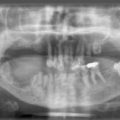Chapter 4. Another significant aspect with regard to radiation protection is the room design described below.
However, besides these aspects, there is a need for protection of the staff and patients by the provision of machine interlocks and shielding. The radiation head itself is constructed with shielding to minimize the radiation leakage outside the treatment beam. For electron treatment, this is also addressed within the applicator design and the diaphragm settings.
Room door and maze barrier interlocks are installed to try to ensure that no accidental irradiation of staff can occur. Besides these, the treatment machines have many interlocked circuits. These interlocks are of two types. The first type is to ensure that the beam is operating within chosen performance limits. An example of such would be the monitor on a linear accelerator which ensures that the beam is uniform and symmetric about the central axis. Another would be the monitor of the bending current which ensures that the energy of the beam remains stable and would detect any fault in the circuit which could affect it and the energy of the beam. The second type ensures that fitments on the machine are correctly set. An example of this on a kilovoltage machine would be that the filter that had been fitted agreed with that selected at the treatment console. This would typically also be applied to the applicator. On a linear accelerator, a typical example would be to indicate that the target was in position.
One well-established safety system on linear accelerators is the provision of the two monitoring ionization chambers which are completely independent and monitor the entire field. The primary chamber, often referred to as Channel 1 is calibrated to deliver a known dose to a reference point from which doses can be calculated and predicted. The other chamber, referred to as Channel 2, the backup channel is set so that in the event of a Channel 1 failure the difference between the two channels will be detected and the irradiation terminated. Should Channel 1 fail completely, Channel 2 is set so that it will terminate the treatment having delivered a very small additional dose than that intended by the clinician. On linear accelerators there is also a tertiary termination system provided by a timer which should be set so that it would terminate the treatment in the event of both Channel 1 and 2 failures with only a small additional dose being given to the patient.
Stay updated, free articles. Join our Telegram channel

Full access? Get Clinical Tree




